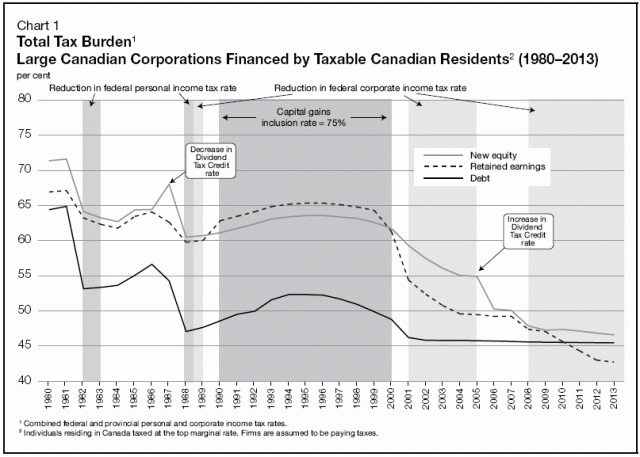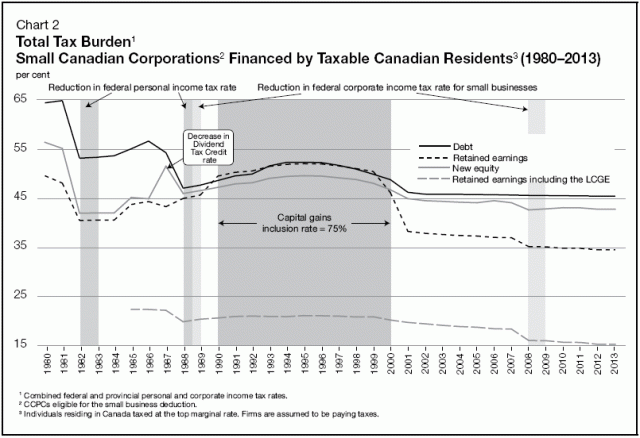I will preface this post by thanking Mark Goodfield at the Blunt Bean Counter for mentioning this site. I am quite happy to link to high-quality writers of Canadian finance that use their real names, and Mark has been on my very small list of site authors on the right-hand side underneath the “Canadian Finance” header.
In particular, I found his off-topic post about golfing at Pebble Beach to be highly entertaining. Since I am one of the world’s worst golfers, I can only live through the experience through other people and I note in sympathy of him having to be stuck in a foursome with an incapable golfer at Spanish Bay.
-=-=-=-=-=-=-=-=-=-=-=-=-=-=-=-=-=-=-=-=-=-=-=-=
My topic on taxation deals with the statement of before-tax and after-tax amounts. Taxation must be factored into all financial calculations (despite how much we dislike paying them), but most people intuitively think in terms of before-tax rather than after-tax amounts.
Here is an example: If you were given a choice of having $100,000 cash in a non-registered account or $120,000 in an RRSP account, which would you take?
Most people would take the $120,000 RRSP account.
However, the answer is not so clear. For example, if you decided to take the RRSP account and pulled it all out in one year, assuming no other income and a BC residence in 2011, you would be left with $86,425 in after-tax money to deal with.
If you split your withdrawals into two $60,000 batches, assuming the 2011 rates apply for 2012, you would still be left with $96,366 after-tax. Structured over three years would leave you with $102,043.
That said, if your goal is to invest the capital and generate income over a long period of time, it is far superior to do it through an RRSP than a non-registered account, where in the latter your returns will be whittled away by having to pay the CRA each year. With the RRSP, you would have a larger capital base to deal with and also the advantage of tax deferral.
However, if your primary method is to increase your wealth through capital gains, there are multiple scenarios where doing it through a non-registered account is superior to an RRSP – especially if your holding periods on your assets are of very long duration. For example, if you chose well and invested in something that returned 10% a year for 20 years (note this is exceptionally difficult to do!), spontaneously liquidated at the end of 20 years, you would have $566,733 at the end of the day. In the RRSP account, after withdrawal, you would have $473,639 after-tax.
Also note that if the investment is determined to be grossly over-valued at a point in time, that the penalty of “spontaneous liquidation” in an RRSP is zero, while the tax liability in a non-registered account increases as the value of the investment increases – there is a significant penalty for realizing a capital gain and an investor has to factor this into their calculations (which I did on this post). I find it personally very frustrating to hold onto investments that have appreciated beyond what I consider to be its fair value, but “prevented” from doing so because of the capital gains taxes that would be incurred as a result.
Financial modelling of the RRSP vs. non-registered scenario as I outlined above is not a trivial issue to answer. The specific variables involved include (but certainly are not limited to):
a. When you need money out of your RRSP (a function of age and personal situation with respect to financial needs);
b. Your tax situation for the next X years (including how the government will change rates over that period of time, how much other income you will generate during that time);
c. Your method of investment (as it impacts how taxes are applied, expectations of future returns).
One other component of before-tax and after-tax calculations concerns the implied rent in a rent-vs-own scenario in a real estate purchase. For an individual, a rent payment comes from after-tax funds, which means that if your rent payment is $10,000/year, the before-tax income required to generate such a rent payment, using a 30% marginal rate, would be $14,286 before-tax.
Assuming a GIC returns 10%, one would intuitively think that they would be indifferent if they invested $100,000 in a residential property vs. the GIC (note this excludes all other costs, such as maintenance, insurance, property taxes, etc.) since the “return on investment” is $10,000/year. However, either the GIC rate must be translated into the 7% after-tax figure ($10,000*10%*(1-0.3)), or the after-tax rental amount must be translated into the $14,286 pre-tax figure ($10,000/(1-0.3)).
It is important when doing these financial calculations that all figures are translated into either before-tax or after-tax numbers, otherwise there will be significant errors in comparative calculations.

